CNC machining tolerances are key when making products, no matter what they’re used for. Today, most products, whether industrial or consumer, need to be consistent to meet standards.
Because of this, manufacturers rely on different types of CNC machines to ensure high precision in their projects. But it’s important to understand what machining tolerances are, their types, the standards for them, and how to measure them. This is because the dimensions of CNC machined parts can differ from the theoretical values due to factors like material type, the machining process, and design.
In this article, we’ll talk about CNC machining tolerances, why they matter, and share a chart of common machining tolerances. Keep reading to learn more about CNC tolerance standards and the factors that influence them.
What Are Machining Tolerances?
Machining tolerances refer to the allowable variation in a part’s dimensions from its original design. No manufacturing process can achieve 100% perfection, so tolerances define the acceptable deviation that ensures the final product functions properly.
The general rule is:
- Smaller tolerances = higher precision, but higher costs
- Larger tolerances = lower precision, but lower costs
For example, in CNC machining, tolerances are typically written as ±0.005″, meaning the dimension can be 0.005 inches above or below the intended size.
Calculation and Expression of Machining Tolerances
To understand how tolerances work, we need to familiarize ourselves with key concepts:
Key Terminologies:
| Term | Definition |
| Basic Size | The intended size of a part as per design |
| Actual Size | The final manufactured size after machining |
| Upper Limit | The maximum acceptable size |
| Lower Limit | The minimum acceptable size |
| Deviation | The difference between the actual and basic sizes |
| Datum | A reference point or line used for measurement |
Material Conditions:
| Term | Meaning | Example |
| MMC (Maximum Material Condition) | When a part has the most material possible | A shaft at its largest diameter |
| LMC (Least Material Condition) | When a part has the least material possible | A hole at its largest diameter |
| Bonus Tolerance | Extra allowance for variation | Difference between MMC and LMC |
Tolerance Formula:
Tolerance=Upper Limit−Lower Limit\text{Tolerance} = \text{Upper Limit} – \text{Lower Limit}
For example, if a shaft is specified as 10 ± 0.2 mm, then:
- Upper Limit= 10.2 mm
- Lower Limit= 9.8 mm
- Tolerance= 10.2 – 9.8 = 0.4 mm
Different Types of Machining Tolerances
Unilateral Tolerance
- What It Means:
The allowed variation is only in one direction. For example, if the design calls for a 10 mm diameter with a unilateral tolerance of +1 mm, the part can be 10 mm or up to 11 mm, but not smaller than 10 mm. - When to Use:
When you want to ensure that a part does not get smaller than the design size, which is important for parts that must fit a tight assembly.
Bilateral Tolerance
- What It Means:
The variation is allowed in both directions. For a 10 mm diameter with a bilateral tolerance of ±1 mm, the part can range from 9 mm to 11 mm. - When to Use:
When you need a part that can be a little bit smaller or larger than the nominal size, allowing for more flexibility in production while still meeting design requirements.
Limit Tolerance
- What It Means:
Instead of using a basic size with a ± variation, the upper and lower limits are defined explicitly. For example, a part might be required to have a diameter between 9 mm and 11 mm. - When to Use:
When you want the final dimensions to fall strictly within a specified range without referencing a nominal value.
Profile Tolerance
- What It Means:
This type controls the shape or contour of a part. It specifies that the surface’s curve must stay within a defined range. Think of it as setting a “fuzzy boundary” for a curved edge. - When to Use:
It is used when the exact shape of a part is crucial, such as in components with complex curves or aerodynamic surfaces.
Orientation Tolerance
- What It Means:
Orientation tolerance limits how much a part can tilt or deviate from a reference plane or line (called a datum). This could mean controlling the perpendicularity or angularity of a surface. - When to Use:
When the part’s angle is critical, like in parts that must align perfectly for proper assembly.
Location Tolerance
- What It Means:
This tolerance ensures that specific features, like holes or slots, are in the correct place relative to a datum. It defines the acceptable shift from the intended position. - When to Use:
When precise placement of features is needed, such as in components that must align with other parts in an assembly.
Form Tolerance
- What It Means:
Form tolerances control the shape of a part. They ensure features like flatness, roundness, or straightness meet design specifications, regardless of size. - When to Use:
When the overall shape of a surface is important, such as on parts that need to maintain a smooth, even finish.
Runout Tolerance
- What It Means:
Runout tolerance specifies how much a feature (like a circular edge) can deviate when the part rotates around a central axis. It ensures that the part remains concentric and doesn’t wobble. - When to Use:
For parts that rotate, like shafts and gears, to guarantee smooth operation and proper fit in assemblies.
Unequally Disposed Tolerances
- What It Means:
These tolerances allow for unequal variations in different directions. Instead of having the same tolerance limit on both sides of the basic size, one side might have a larger allowance than the other. - When to Use:
When the function of a part demands more material in one direction than the other, such as for features that interact with another part that has its own tolerance limits.
Summary Table of Machining Tolerances
| Tolerance Type | Definition | When to Use |
| Unilateral Tolerance | Variation allowed in only one direction (e.g., 10 mm +1 mm) | When parts must not be smaller than the basic size. |
| Bilateral Tolerance | Variation allowed in both directions (e.g., 10 mm ±1 mm) | For parts that can be slightly smaller or larger than the nominal size. |
| Limit Tolerance | Upper and lower limits defined explicitly (e.g., 9 mm to 11 mm) | When strict dimensional limits are required without reference to a nominal size. |
| Profile Tolerance | Controls the shape or curve of a feature | For parts with critical curves or aerodynamic surfaces. |
| Orientation Tolerance | Limits the deviation of a part’s angle relative to a datum | When precise angular alignment is essential. |
| Location Tolerance | Specifies how much a feature can shift from its intended position | For accurate placement of holes, slots, or other features in assemblies. |
| Form Tolerance | Controls the overall shape (flatness, roundness, straightness) | When the smooth, correct shape is vital to the part’s function or fit. |
| Runout Tolerance | Limits the variation when a part rotates around an axis | For parts that must rotate without wobbling, like shafts and gears. |
| Unequally Disposed Tolerances | Different tolerance limits on each side of the basic size | When different directional allowances are needed based on part function. |
What is ISO 2768?
ISO 2768 is an international standard that defines general tolerances for machined parts, offering guidelines for linear dimensions, angular measurements, and geometric tolerances. It simplifies the design process by eliminating the need to specify individual tolerances for every feature, which is especially useful for less critical dimensions. ISO 2768 has two tolerance classes: “fine” (f) and “coarse” (c), allowing designers and manufacturers to align tolerance levels with the functional requirements of their parts. Using this standard can save time, reduce production costs, and ensure consistency across manufacturing operations.
Importance of Machining Tolerances
Most parts made using Computer Numerical Control show some inherent variation. These variations are controlled by tolerances to achieve reliability and best performance.
Improving Part Accuracy
CNC tolerances are important for maintaining part compatibility. Tolerances ensure that machined parts fit well in assemblies. Moreover, some features guarantee that everything works as planned in the given use cases. Excessive concentrations beyond such limits can lead to some of these parts being classified as defective and thus useless.
Establishing a Margin of Error
In manufacturing, there’s always variation exists no matter the process being used. Deviations are provided by the machining tolerances, which define the operation margins. This specification minimizes the chances of recalling a produced part.
Controlling Machining Costs
In most cases, tighter tolerances lead to a higher cost of CNC machining. Some of the close tolerance parts may require other methods of finishing such as grinding, and superfinishing. However, more tolerant surfaces enable completion by simple machining operations.
Maintaining the Aesthetic Quality of Products
A high precision tolerance signifies the end appearance of the machined parts. For example, if two parts are to fit closely then tighter limits have to be set at the time of designing. This ensures a perfect fit and eliminates the chance for an interlocking interface.
CNC Machining Tolerances – Things To Consider
Tolerancing means incorporating specifications into a dimension at the design of a part. Here are key tips to consider when setting tolerances for CNC machining:
Essential Tolerances Must Be Prioritized
Tolerance is a critical aspect of design. However, not all the features have to be toleranced. As a way of saving both time and money, apply tolerances only to those features, which influence other components.
Do Not Use Small/Tight Tolerances
Excessive tolerance can lead to the increased amount of scrap produced. They require special gauging, more clamping, and longer cutting time than conventional ones. All these factors result in a higher overhead cost.
Treat Material Properties
The material used has a great influence on the achievable machining tolerances. That’s why sometimes it’s impossible to achieve the given specific tolerances – it depends on the material. For example, some materials may be flexible, especially when being machined and, therefore, it becomes difficult to achieve the required level of tolerances.
Geometric Dimensioning and Tolerancing (GD&T)
GD&T is an international system that standardizes how tolerances are specified in engineering drawings.
| GD&T Feature | Purpose | Example |
| Straightness | Ensures a part is not curved | A long metal rod must be perfectly straight |
| Flatness | Controls surface evenness | A machine base must not have bumps |
| Circularity | Ensures a round part is truly circular | Piston rings in engines |
| Concentricity | Aligns the center of features | Holes must align perfectly |
Common CNC Machining Tolerances
In CNC machining, standard tolerances refer to the typical level of precision that most machines can achieve without special adjustments. These tolerances ensure that parts meet industry requirements while keeping costs and production time reasonable.
| CNC Machining Process | Typical Tolerance |
| CNC Milling (3-axis & 5-axis) | ± 0.005″ (0.13 mm) |
| CNC Lathe Turning | ± 0.005″ (0.13 mm) |
| CNC Router | ± 0.005″ (0.13 mm) |
| CNC Engraving | ± 0.005″ (0.13 mm) |
| Screw Machining | ± 0.005″ (0.13 mm) |
| Gasket Cutting Tools | ± 0.030″ (0.762 mm) |
| Rail Cutting | ± 0.030″ (0.762 mm) |
| Steel Rule Die Cutting | ± 0.015″ (0.381 mm) |
| Surface Finish | 125 RA (average roughness) |
💡 Key Takeaway: Most CNC machining processes have a general tolerance of ± 0.005″ (0.13 mm), but this can change depending on material type, machine capabilities, and specific project needs.
Tight Tolerances vs. Loose Tolerances
Not all parts need extremely tight tolerances. While tighter tolerances improve precision, they also increase costs, machining time, and inspection requirements. Here’s a quick guide to help you decide:
| Tolerance Type | When to Use | Examples |
| Standard Tolerance (± 0.005″) | Most general-purpose CNC parts where extreme accuracy is not required. | Machine brackets, basic fasteners, covers. |
| Tight Tolerance (± 0.001″ or less) | When precision is crucial for part function, such as in aerospace or medical applications. | Aircraft components, surgical tools, microelectronics. |
| Loose Tolerance (± 0.010″ or more) | When a part’s function is not affected by minor dimensional variations, reducing costs. | Decorative pieces, basic enclosures, non-critical supports. |
Factors Influencing Tolerances in CNC Machining
Normally, products are made to standard tolerance limits except when the customer has set personalized limits. There are several reasons to allow tolerances in manufacturing.
Material Properties
The choice of materials directly affects the achievable tolerance. These characteristics may include: abrasiveness, material hardness, and heat resistance.
- Abrasiveness:CNC cutters are susceptible to coarse materials. Such materials result in faster tool degradation. Moreover, they make it difficult to achieve very tight tolerances.
- Hardness:It’s often challenging to machine less dense materials with great precision. Its dimensions may vary during cutting and that is why it’s recommended to remain patient while dealing with softer/flexible products.
- Heat Stability:Nonmetal materials tend to deform during the machining processes due to heat, produced during the processes.
Choice of CNC Machining Processes
The selected machining process affects tolerances given the differences in surface features and roughness. Each CNC machining technique like turning, milling, and grinding offers unique strengths and challenges. In addition, various CNC machines with multiple axes may have different basic tolerances. Awareness of these capabilities means that the required tolerances will be achieved, particularly where designs have tolerance specified closely.
Surface Finishing Effects
Subsequent processes such as painting and anodizing may influence the part’s dimensions. These surface treatments may place machined parts beyond the tolerance levels normally desired for such parts. Therefore, it is crucial to choose the right finishing process to reduce distortions.
CNC Cutting Tools
The types of cutting tools used in CNC machining also have an impact on tolerances. Accurate tools, properly sized and coated, and sharped offer improved precision.
Budget Considerations
The tools and materials must be chosen based on a project’s budget. Reduced tolerances mean more time and specialized tools which in turn raise costs significantly. The acquisition of high-quality tools guarantees that the parts produced have the necessary tolerance and uniform finish.
Machinist Expertise
The machinist’s skill and experience are paramount in the determination of the tolerances. An expert operator can choose the proper tools for cutting, set up the correct factors of machining, and guarantee the process meets the necessary characteristics.
Why Do CNC Machining Tolerances Matter?
Without proper tolerances, parts may not fit together properly, leading to misalignments, assembly issues, or even failure in operation. Choosing the right tolerance ensures:
✅ Smooth assembly of components
✅ Reduced machining costs by avoiding unnecessary precision
✅ Better overall performance of the final product
If you’re unsure about what tolerance to use for your project, a good rule of thumb is to start with ± 0.005” and adjust as needed based on the part’s function and requirements.
How to Improve Machining Tolerances?
✅ Use high-quality CNC machines.
✅ Choose appropriate materials for precision machining.
✅ Control environmental factors like temperature.
✅ Use advanced measuring tools like Coordinate Measuring Machines (CMM).
Tips for Tighter CNC Machining Tolerances
Choose the Right Material
Not all materials machine the same way. Some expand, warp, or wear down cutting tools faster, which can affect tolerance accuracy.
🔹 Best for Tight Tolerances: Stainless steel, aluminum, brass, and titanium.
🔹 Harder to Machine Accurately: Plastics, soft metals, composites (due to thermal expansion and flexibility).
💡 Tip: If you’re working with a material that expands or contracts with temperature, consider using climate-controlled machining environments.
Use High-Quality CNC Machines
The type and condition of the CNC machine directly impact the precision of the final part.
✅ Best Choice: 5-axis CNC machines (greater flexibility and accuracy)
✅ Avoid: Older or worn-out machines (they may introduce slight errors due to mechanical wear)
💡 Tip: Always ensure that CNC machines are properly calibrated and maintained to prevent inconsistencies.
Optimize the Cutting Tools
Using the right cutting tools is crucial for achieving tight tolerances. Dull or low-quality tools can cause uneven cuts and poor surface finishes.
✔ Use Carbide or Diamond-Coated Tools – They stay sharp longer and reduce tool deflection.
✔ Use the Right Feed Rate & Speed – Too fast can cause chatter; too slow can cause excess heat buildup.
💡 Tip: Regularly replace worn-out tools and use toolpath simulation software to ensure smooth, accurate cuts.
Control Temperature & Environmental Factors
Even small temperature changes can affect machining accuracy. Metals expand when heated, which can alter dimensions.
🌡 Solutions:
- Machine in a temperature-controlled
- Use coolants and lubricants to reduce heat buildup.
- Let metal parts rest before final measurements(so they stabilize).
💡 Tip: If you’re machining to ultra-tight tolerances, measure the part at the same temperature it will be used.
Use Precision Workholding & Fixturing
A secure, stable workpiece is essential for high precision. Even the slightest movement can cause errors.
🔹 Best Workholding Options:
- Hydraulic clamps for consistent pressure.
- Vacuum fixtures for thin, delicate parts.
- Custom jigs & fixtures to reduce vibration.
💡 Tip: Always double-check alignment before starting a machining run to avoid positioning errors.
Reduce Tool Deflection & Vibration
Tool deflection happens when the cutting tool bends slightly under pressure, affecting accuracy.
🛠 How to Fix This:
- Use shorter tool lengths(less bending).
- Increase tool diameter for stability.
- Use rigid machine setups to minimize vibrations.
💡 Tip: Reducing the depth of each cut can also help prevent tool deflection.
Choose the Right Tolerance for the Right Part
Not every part needs a tolerance of ±0.001”. Over-specifying tolerances can increase machining costs and production time.
✅ Use tight tolerances where needed – like on mating surfaces, bearing fits, or aerospace components.
✅ Use looser tolerances when possible – for non-critical areas like decorative finishes or general enclosures.
💡 Tip: Talk to your machinist or CNC shop—they can suggest the best tolerance levels without adding unnecessary cost.
Inspect & Measure Parts Correctly
Tighter tolerances require high-precision measuring tools. Standard calipers won’t cut it for ultra-precise parts.
🔹 Best Measuring Tools:
✔ CMM (Coordinate Measuring Machine) – Best for measuring complex 3D parts.
✔ Micrometers & Dial Indicators – More accurate than standard calipers.
✔ Optical Comparators & Laser Scanners – Great for checking surface profiles.
💡 Tip: Always measure in a temperature-controlled environment to avoid inaccurate readings due to material expansion.
Use Post-Machining Processes for Extra Accuracy
If your CNC machine can’t achieve the required tolerance, consider secondary finishing processes like:
🔹 Grinding – For super-smooth and ultra-precise surfaces.
🔹 Honing – Improves inner diameter accuracy for tight-fit holes.
🔹 Lapping & Polishing – Removes microscopic imperfections for high-precision parts.
💡 Tip: Combining CNC machining with post-processing techniques can help meet ultra-tight tolerances while keeping costs under control.
Work with an Experienced CNC Machining Partner
Not all machine shops specialize in ultra-precise machining. If you need super-tight tolerances, choose a CNC shop that has experience working with tight-tolerance parts.
✅ Look for shops that:
- Have 5-axis CNC machines and advanced metrology equipment.
- Offer precision finishing services like grinding and honing.
- Provide quality control certifications(ISO 9001, AS9100, etc.).
💡 Tip: When requesting a quote, always mention the tolerance requirements upfront to ensure the shop can meet your needs.
How Surface Roughness Affects Tolerances
Machining tolerances specify how close a part’s dimensions must be to the design. But surface roughness can affect precision in multiple ways:
✅ Friction & Fit: Rough surfaces create extra friction, which can lead to improper fitting in tight-tolerance parts.
✅ Wear & Durability: High roughness can accelerate wear and tear, reducing the lifespan of moving components.
✅ Sealing Issues: Seals, gaskets, and O-rings need smooth surfaces to work effectively—roughness can cause leaks.
✅ Appearance: Some applications require a polished, smooth look (e.g., medical and aerospace parts).
💡 Tip: For tight-tolerance parts, achieving the correct surface roughness is just as critical as hitting the right dimension.
Standard Surface Roughness for Different Machining Processes
Different machining techniques create different roughness levels. Here’s a comparison of common processes:
| Machining Process | Typical Roughness (Ra, µm/µin) | Application |
| Milling (Standard) | 1.6 – 6.3 µm (63 – 250 µin) | General machining |
| CNC Turning (Standard) | 0.8 – 3.2 µm (32 – 125 µin) | Shafts, gears |
| Grinding | 0.1 – 1.6 µm (4 – 63 µin) | High-precision parts |
| Polishing | 0.05 – 0.4 µm (2 – 16 µin) | Medical, aerospace |
| Lapping | 0.01 – 0.1 µm (0.4 – 4 µin) | Optical, sealing surfaces |
💡 Tip: Choose the right machining process based on how smooth your part needs to be.
Cost Considerations for Tight Tolerances
Tighter tolerances increase costs due to:
🔹 Additional machining time
🔹 More material waste
🔹 Increased inspection requirements
🔹 Tip: Use tight tolerances only where necessary to balance cost and precision.
Inspection and Quality Control
Common methods for verifying tolerances include:
| Inspection Method | Purpose |
| CMM (Coordinate Measuring Machine) | Measures complex part geometry |
| Micrometers & Calipers | Checks dimensions manually |
| Surface Roughness Tester | Measures surface finish |
| Laser Scanning | Inspects part accuracy digitally |
Industries Requiring Precision CNC Tolerances
| Application Industry | Products and Parts |
| Medical Sector | Surgical instruments, implants, prosthetics |
| Aerospace | Aircraft components, engine parts, landing gear |
| Automotive | Engine components, transmission parts, sensors |
| Defense and Military | Firearms, tactical gear, vehicle parts |
| Electronics | Circuit boards, housings, connectors |
| Watchmaking and Jewelry | Watch components, fine jewelry settings |
| Oil and Gas | Drill bits, valves, pipeline fittings |
Tops Precision Guarantees Strict Conformance To CNC Tolerance Standards
Tops Precision assumes the function of your leading CNC machine shop. Our team is well capable of meeting very tight CNC tolerance standards. Our State-of-the-art tooling ensures your project requirements are met to the last detail.
We offer a wide range of finishings and precision machining services, including 5-axis and mill-turning. Our procedure involves quality checks and stringent material certification enables us a trusted partner.
Our services include full dimensional inspections for the proper accuracy. Come and visit us today to start your machining project!
FAQs
- What is considered a tight tolerance in machining?
Anything below ±0.005″ is considered tight.
- Why do tighter tolerances increase costs?
More machining time, tool wear, and inspections increase production expenses.
- What materials have the tightest tolerances?
Metals like titanium and stainless steel can be machined with extreme precision.
- Can CNC machines achieve ±0.001″ tolerances?
Yes, but it depends on the machine quality and material properties.

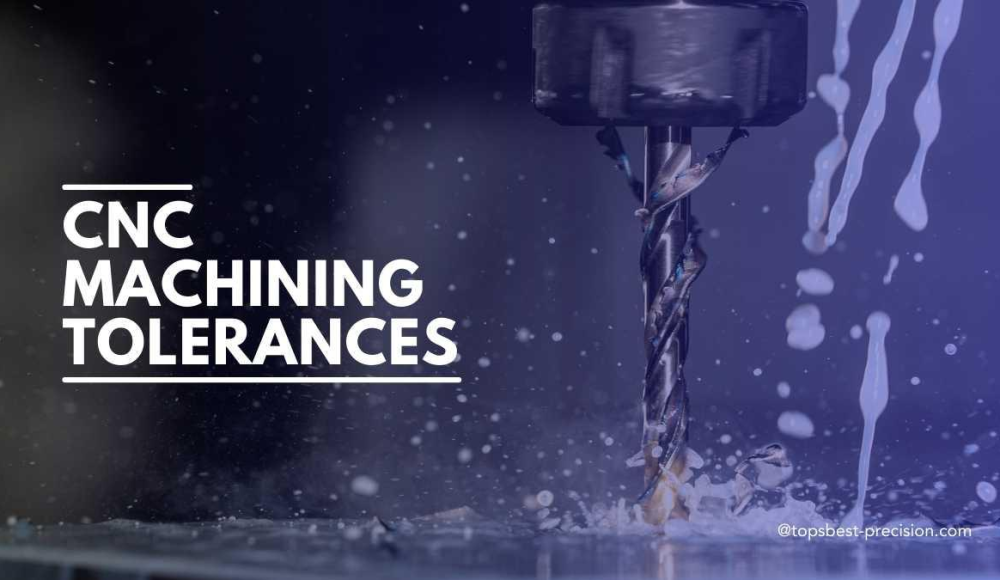

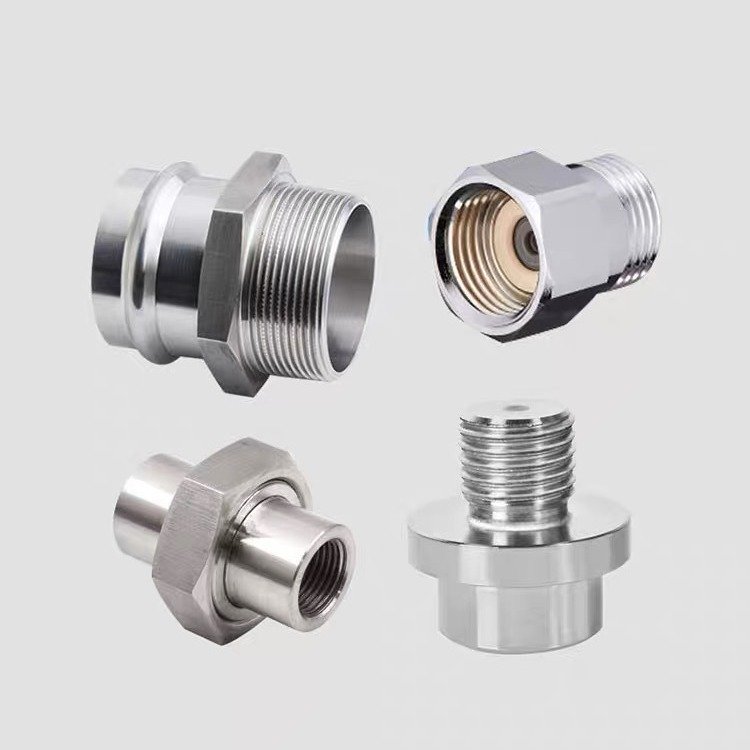
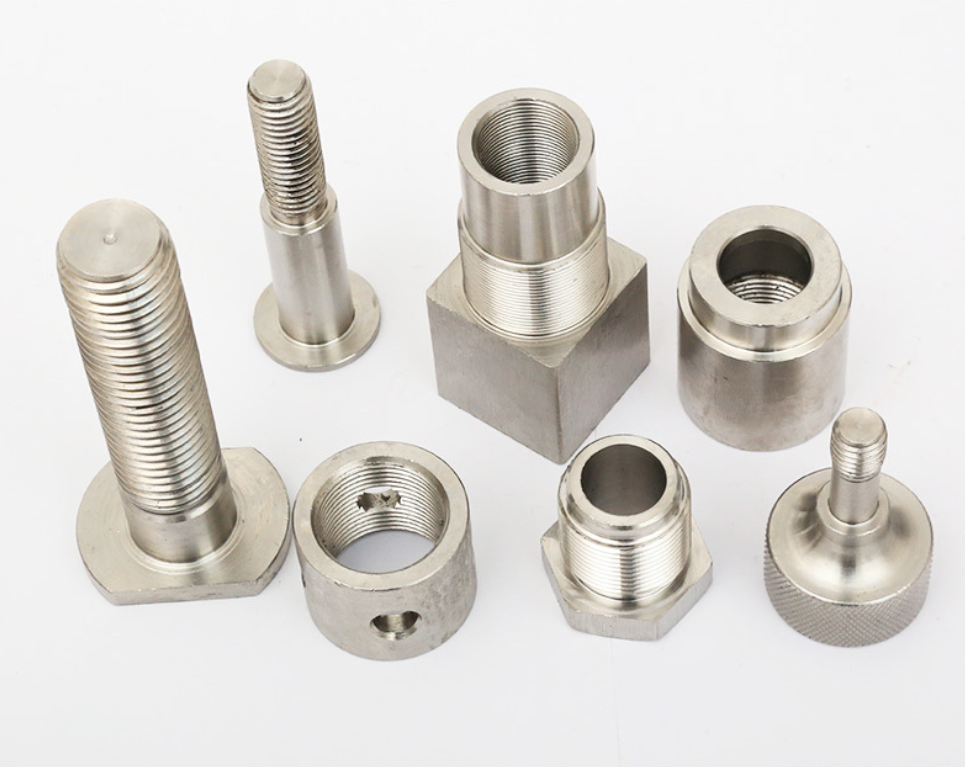
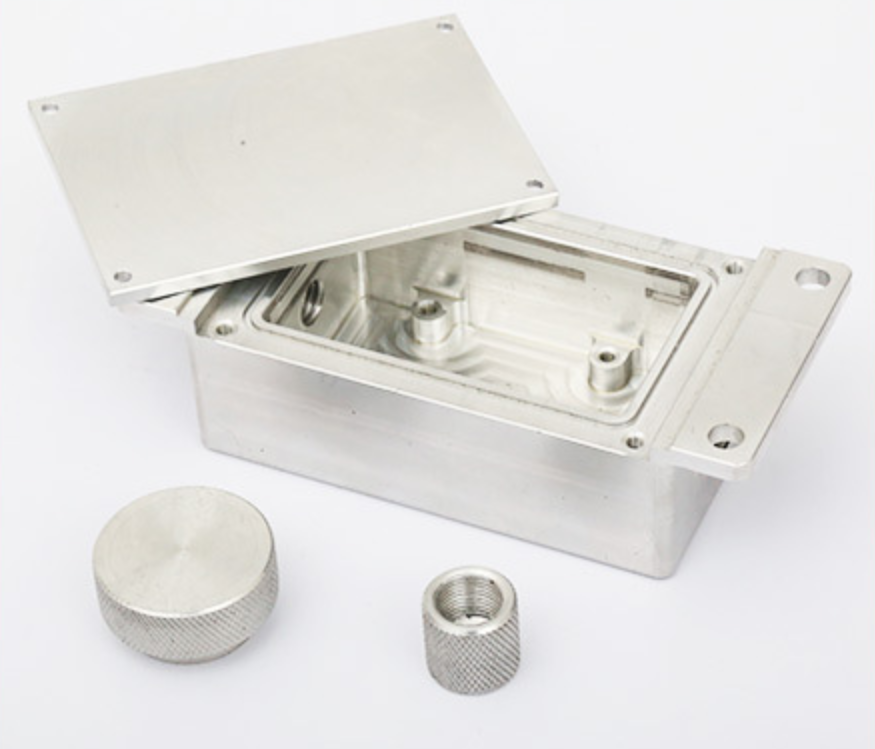

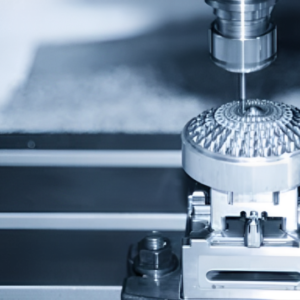
2 thoughts on “CNC Machining Tolerances:Everything You Need to Know”